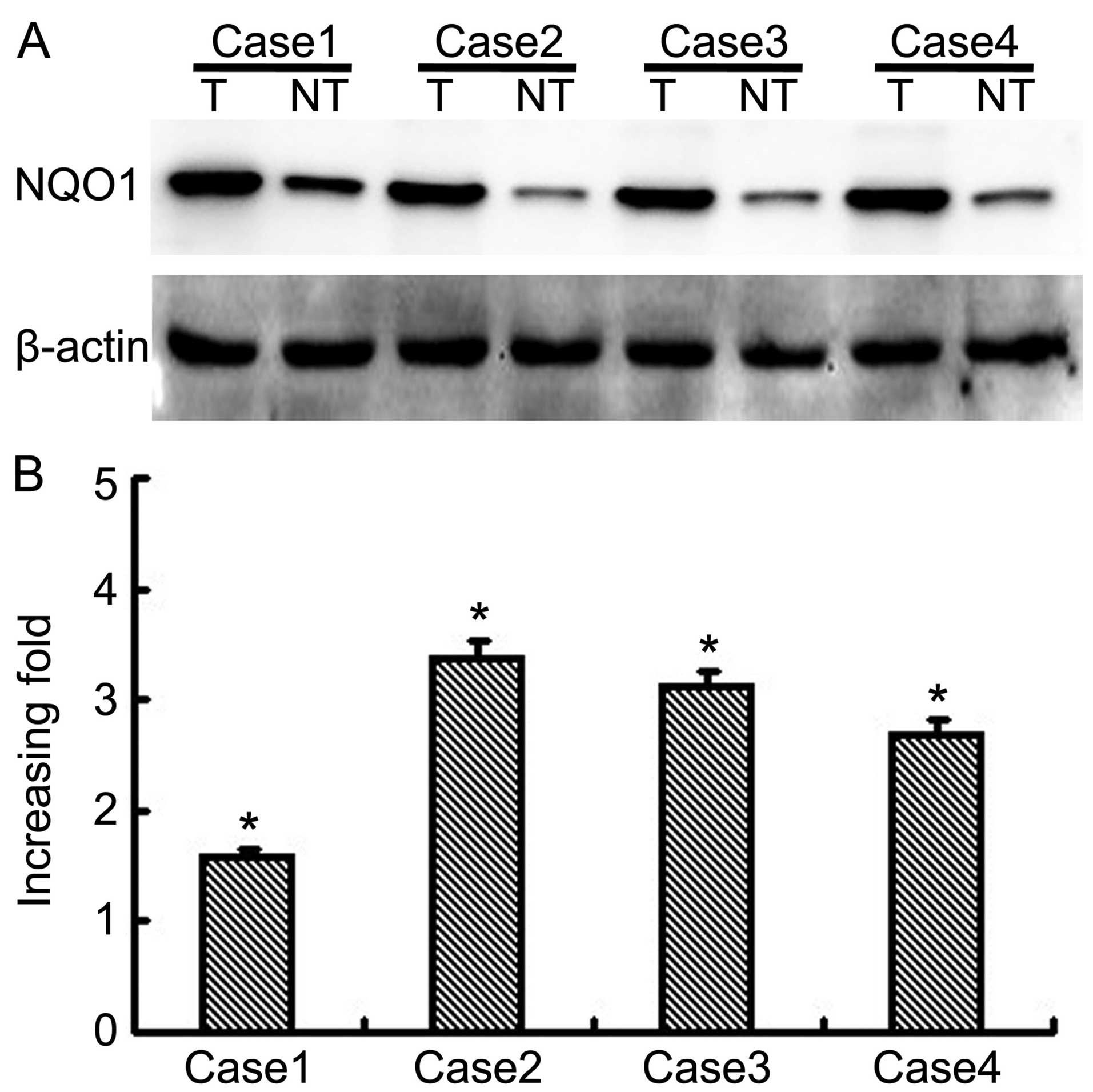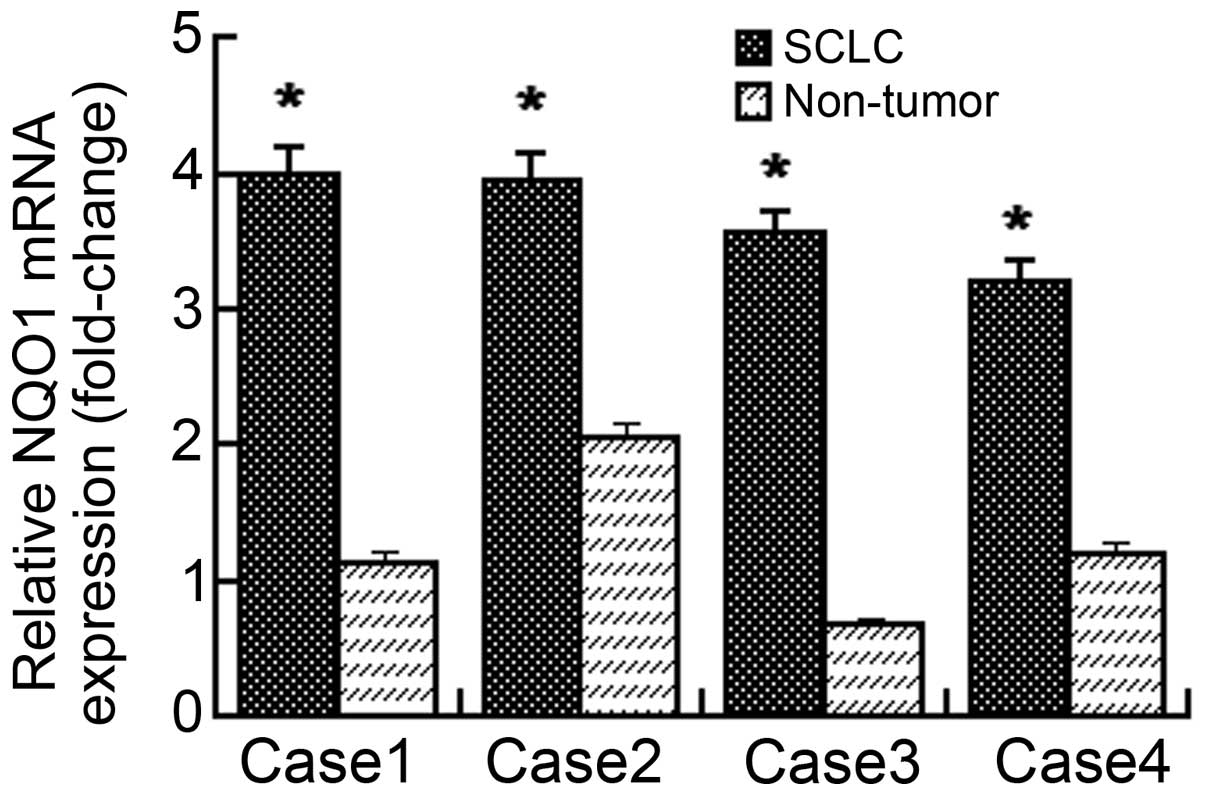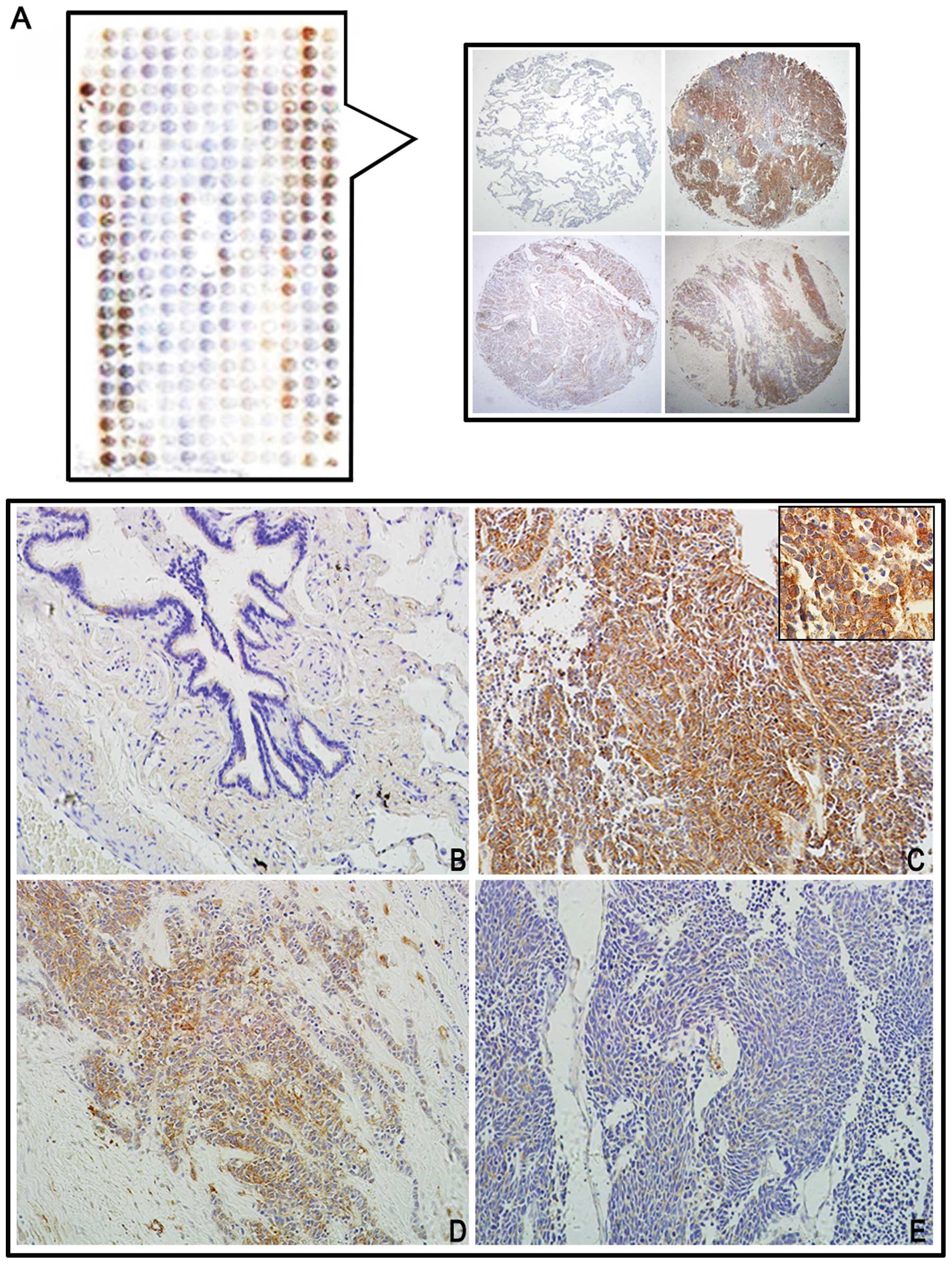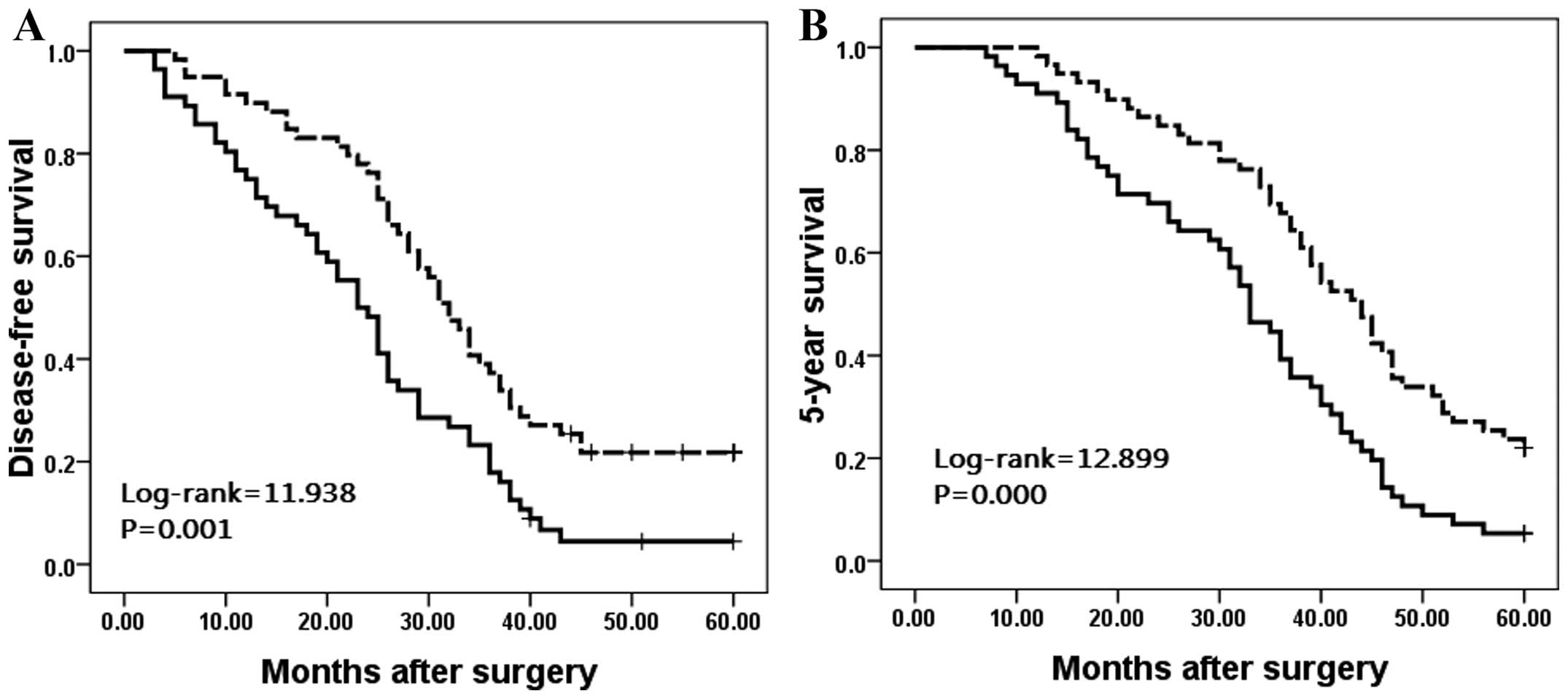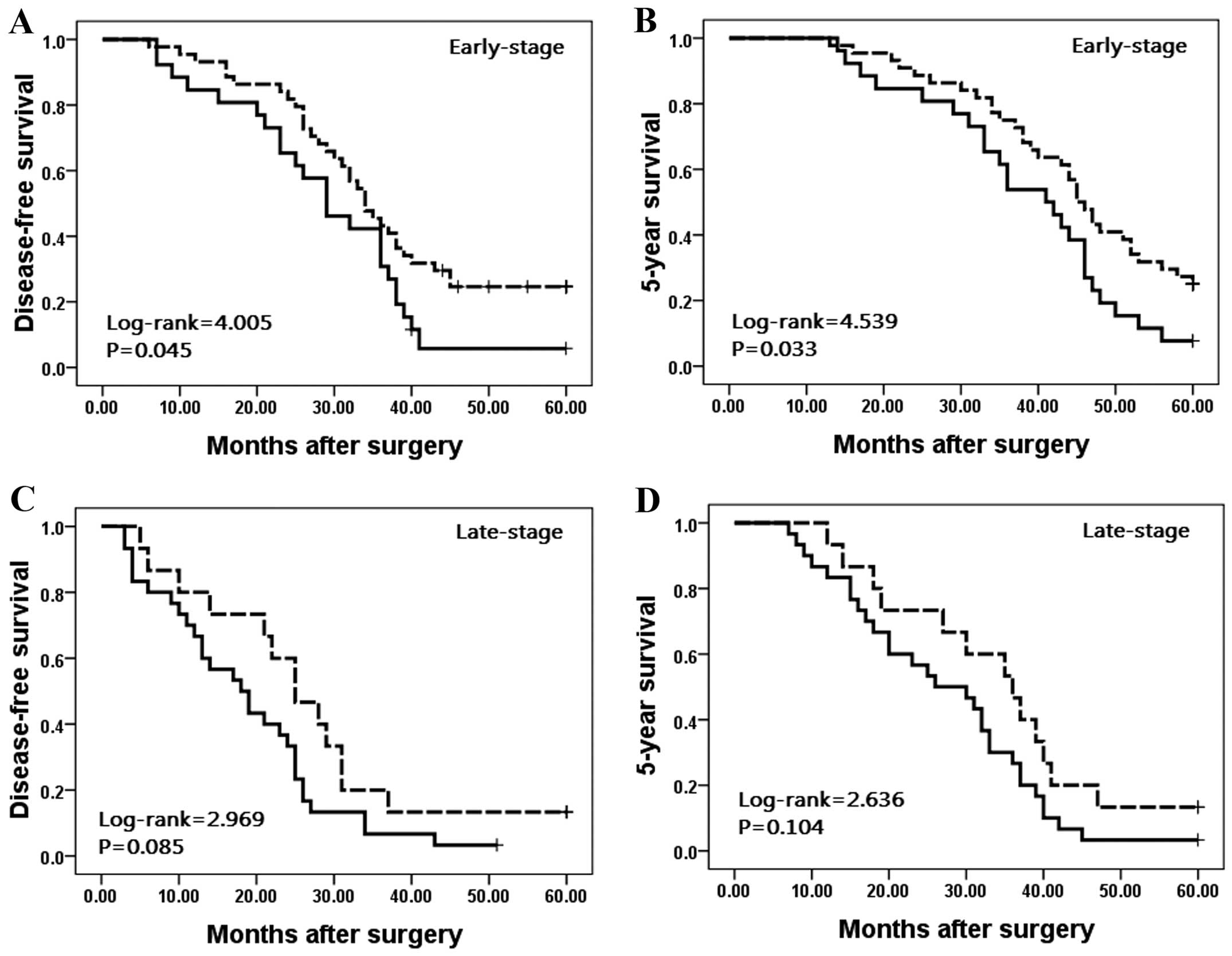|
1
|
Kallianos A, Rapti A, Zarogoulidis P, et
al: Therapeutic procedure in small cell lung cancer. J Thorac Dis.
5(Suppl 4): S420–S424. 2013.
|
|
2
|
Rudin CM, Hann CL, Peacock CD and Watkins
DN: Novel systemic therapies for small cell lung cancer. J Natl
Compr Cancer Netw. 6:315–322. 2008.PubMed/NCBI
|
|
3
|
Zhang Y and He J: The development of
targeted therapy in small cell lung cancer. J Thorac Dis.
5:538–548. 2013.PubMed/NCBI
|
|
4
|
Siegel D and Ross D: Immunodetection of
NAD(P)H:quinine oxidoreductase 1 (NQO1) in human tissues. Free
Radic Biol Med. 29:246–253. 2000.
|
|
5
|
Siegel D, Yan C and Ross D:
NAD(P)H:quinone oxidoreductase 1 (NQO1) in the sensitivity and
resistance to antitumor quinones. Biochem Pharmacol. 83:1033–1040.
2012. View Article : Google Scholar : PubMed/NCBI
|
|
6
|
Zhu CL, Huang Q, Liu CH, et al: NAD(P)H:
quinone oxidoreductase 1 (NQO1) C609T gene polymorphism association
with digestive tract cancer: a meta-analysis. Asian Pac J Cancer
Prev. 14:2349–2354. 2013. View Article : Google Scholar : PubMed/NCBI
|
|
7
|
Buranrat B, Prawan A, Kukongviriyapan U,
et al: Dicoumarol enhances gemcitabine-induced cytotoxicity in high
NQO1-expressing cholangiocarcinoma cells. World J Gastroenterol.
16:2362–2370. 2010. View Article : Google Scholar : PubMed/NCBI
|
|
8
|
Lyn-Cook BD, Yan-Sanders Y, Moore S, et
al: Increased levels of NAD(P)H: quinine oxidoreductase 1 (NQO1) in
pancreatic tissues from smokers and pancreatic adenocarcinomas: a
potential biomarker of early damage in the pancreas. Cell Biol
Toxicol. 22:73–80. 2006. View Article : Google Scholar : PubMed/NCBI
|
|
9
|
Cheng Y, Li J, Martinka M and Li G: The
expression of NAD(P)H:quinone oxidoreductase 1 is increased along
with NF-κB p105/p50 in human cutaneous melanomas. Oncol Rep.
23:973–979. 2010.
|
|
10
|
Awadallah NS, Dehn D, Shah RJ, et al: NQO1
expression in pancreatic cancer and its potential use as a
biomarker. Appl Immunohistochem Mol Morphol. 16:24–31.
2008.PubMed/NCBI
|
|
11
|
Garate M, Wani AA and Li G: The
NAD(P)H:quinone oxido-reductase 1 induces cell cycle progression
and proliferation of melanoma cells. Free Radic Biol Med.
48:1601–1609. 2010. View Article : Google Scholar : PubMed/NCBI
|
|
12
|
Liu S, Li L, Zhang Y, et al: The
oncoprotein HBXIP uses two pathways to up-regulate S100A4 in
promotion of growth and migration of breast cancer cells. J Biol
Chem. 287:30228–30239. 2012. View Article : Google Scholar : PubMed/NCBI
|
|
13
|
Kong J, Li Y, Liu S, et al: High
expression of ezrin predicts poor prognosis in uterine cervical
cancer. BMC Cancer. 13:5202013. View Article : Google Scholar : PubMed/NCBI
|
|
14
|
Lin L, Piao J, Gao W, et al: DEK over
expression as an independent biomarker for poor prognosis in
colorectal cancer. BMC Cancer. 13:3662013. View Article : Google Scholar : PubMed/NCBI
|
|
15
|
Lajin B and Alachkar A: The NQO1
polymorphism C609T (Pro187Ser) and cancer susceptibility: a
comprehensive meta-analysis. Br J Cancer. 109:1325–1337. 2013.
View Article : Google Scholar
|
|
16
|
Talalay P and Dinkova-Kostova AT: Role of
nicotinamide quinine oxidoreductase 1 (NQO1) in protection against
toxicity of electrophiles and reactive oxygen intermediates.
Methods Enzymol. 382:355–364. 2004. View Article : Google Scholar : PubMed/NCBI
|
|
17
|
Lee J, Kim KS, Lee MH, et al: NAD(P)H:
quinone oxidoreductase 1 and NRH:quinone oxidoreductase 2
polymorphisms in papillary thyroid microcarcinoma: correlation with
phenotype. Yonsei Med J. 54:1158–1167. 2013. View Article : Google Scholar : PubMed/NCBI
|
|
18
|
Nair S, Xu C, Shen G, et al:
Pharmacogenomics of phenolic anti-oxidant butylated hydroxyanisole
(BHA) in the small intestine and liver of Nrf2 knockout and C57L/6J
mice. Pharm Res. 23:2621–2637. 2006. View Article : Google Scholar : PubMed/NCBI
|
|
19
|
Kuehl BL, Paterson JW, Peacock JW, et al:
Presence of a heterozygous substitution and its relationship to
DT-diaphorase activity. Br J Cancer. 72:555–561. 1995. View Article : Google Scholar : PubMed/NCBI
|
|
20
|
Schulz WA, Krummeck A, Rösinger I, et al:
Increased frequency of a null-allele for NAD(P)H: quinone
oxidoreductase in patients with urological malignancies.
Pharmacogenetics. 7:235–239. 1997. View Article : Google Scholar : PubMed/NCBI
|
|
21
|
Nagata M, Kimura T, Suzumura T, et al:
C609T polymorphism of NADPH quinone oxidoreductase 1 correlates
clinical hematological toxicities in lung cancer patients treated
with amrubicin. Clin Med Insights Oncol. 7:31–39. 2013.
|
|
22
|
Malik MA, Zargar SA and Mittal B: Role of
NQO1 609C>T and NQO2 -3423G>A gene polymorphisms in
esophageal cancer risk in Kashmir valley and meta analysis. Mol
Biol Rep. 39:9095–9104. 2012.
|
|
23
|
Singh M, Goel S, Meeley RB, et al:
Production of viable gametes without meiosis in maize deficient for
an ARGONAUTE protein. Plant Cell. 23:443–458. 2011. View Article : Google Scholar : PubMed/NCBI
|
|
24
|
Soucek P, Susova S, Mohelnikova-Duchonova
B, et al: Polymorphisms in metabolizing enzymes and the risk of
head and neck squamous cell carcinoma in the Slavic population of
the central Europe. Neoplasma. 57:415–421. 2010. View Article : Google Scholar : PubMed/NCBI
|
|
25
|
Mikami K, Naito M, Ishiguro T, et al:
Immunological quantitation of DT-diaphorase in carcinoma cell lines
and clinical colon cancers: advanced tumors express greater levels
of DT-diaphorase. Jpn J Cancer Res. 89:910–915. 1998. View Article : Google Scholar
|
|
26
|
Fagerholm R, Sprott K, Heikkinen T, et al:
Overabundant FANCD2, alone and combined with NQO1, is a sensitive
marker of adverse prognosis in breast cancer. Ann Oncol.
24:2780–2785. 2013. View Article : Google Scholar : PubMed/NCBI
|
|
27
|
Li LS, Bey EA, Dong Y, et al: Modulating
endogenous NQO1 levels identifies key regulatory mechanisms of
action of β-lapachone for pancreatic cancer therapy. Clin Cancer
Res. 17:275–285. 2011.PubMed/NCBI
|
|
28
|
Vasiliou V, Ross D and Nebert DW: Update
of the NAD(P) H:quinine oxidoreductase (NQO) gene family.
Hum Genomics. 2:329–335. 2006. View Article : Google Scholar : PubMed/NCBI
|















